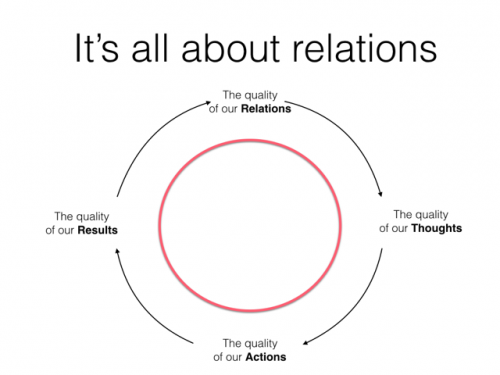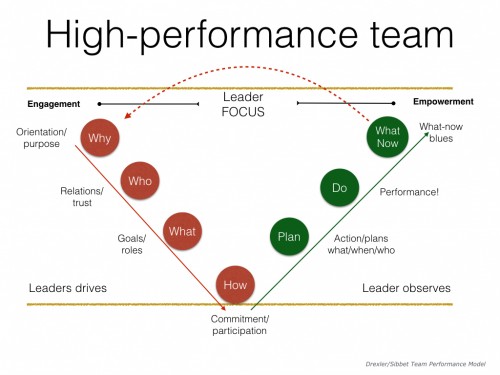
Last week, we looked at the importance of building relations as a basic skill for the first time manager.
Essentially, you are the instrument. How you decide to show up from situation to situation will determine how your relationships with other people are formed.
As the ‘instrument’, you will need to be aware of three things: Your actions, behaviours and conversations. How you decide to mix and match these three will, at the end of the day, determine how successful you end up being in your roles as a first time manager (or in any future management position for that matter).
This week, we explore the first of these three key tools.
What you decide to do – or not to do – defines you in your managerial role.
Leaders who come across as trustworthy and powerful in the best sense of the word are the people whom you know you can trust to act on something when it is brought to their attention. They are in my view the powerful leaders.
Some people have a problem with the words power and powerful. In some cultures, it has negative connotations – and there are often good reasons for that because we have all experienced powerful leaders who abused their power.
In his book Power and Love, which I can highly recommend, Adam Kahane defines two kinds of power: constructive and destructive. He explains the difference as:
- ‘Power over’ – which is the destructive version.
- ‘Power to’ – which is the constructive version.
When as a leader I use my power as ‘power over’, it is not very engaging – on the contrary nobody feels inspired by being subjected to ‘power over’ – power over is encapsulated in the response: “Because I say so!” to an inquiry from a team member asking: “ why we are doing this?” .
It is a classic beginner’s error for new manager to get this wrong and to try and bolster their position by demonstrating ‘power over’ instead of focusing on ‘power to’. This form of power shows up when you order people around, grant or don’t grant favour, privileges to team members etc. These are all actions that use to demonstrate ‘I am in charge here’.
‘Power to’ on the other hand is when you use your skills, position and authority to change or create something, to move the agenda forward. You are comfortable distributing power to other team members; it’s all about getting things done and moving the agenda forward.
Leaders who display that kind of power are a joy to work for in contrast to the ones that are powerless because they do not take action but always postpone, hesitate or kick issues upstairs – to the side.
Non-action is also action
In my view, the core problem with people in charge at any level in an organisation, who are not seen as great leaders by their surroundings, is not so much that they do the wrong things but that they are not doing the things that they obviously should be doing.
These indecisions come in all shapes and sizes – from small stuff like: “Would it be possible for me to take 2 days off next month to go to my sister’s wedding…?” and then you wait and you wait and you wait for an answer and maybe you even remind them more than once and get: “Oh yes, so sorry I will look into it…” Or more serious issues like, “We have a customer who is very upset with our last delivery on the phone.” There is a world of difference between the leader who says “Let me speak to her now”, and the one that says “I am busy just now, tell her I will call her back” and you think: “That is what she said last week…”
The worst form of non-action that I know is the manager who does not respond to non-performance. It is in my opinion probably the most destructive form of non action that there is.
Think about it – what is the worst way to insult a high performing employee? – It is to ask them to work alongside an idiot. If you are a highly engaged employee and take pride in your job, nothing ruins your motivation and engagement as much as watching someone work alongside you that makes a mess of the product, the customer relation or whatever. Someone who ultimately does not care the way you care.
The powerless manager will come up with excuses – “Yes, I know Joe is not quite up to snuff but that is all we can get just now, so please suffer him for now and we will get it sorted out eventually.” – but they seldom do. Because if someone is not doing what they are supposed to be doing, it is time for a powerful conversation – and there is no reason to postpone it.
Everyone on your team needs to know that if things are not going according to plan, you will act – not as tyrant spewing blame all over the show – but you will act because you care and you will sort it out – you will be asking questions, trying to understand why we are not on track and then you will take appropriate action.
Why can it be hard to take action – well you could take the wrong action and stand there with egg all over you face. So non action is often a result of a fear of being wrong. But as leaders, we need to get over the fear of being wrong. We will be wrong from time to time and that is not a problem as long as we acknowledge it and try to improve. Perfect leaders do not exist.
Think about it, whom would you personally prefer to work for, the leader who acts and makes mistake – and is prepared to acknowledge them, or the leader who does not act but also never seems to do wrong because they push those decisions up the system instead of taking responsibility for their own actions?
Next week, we will look more closely at the second tool at your disposal – your behaviour.
__________________________________________________________
This is the sixth article in a series on how to lead as a first time manger. If you would like to know more, check out other articles of the first time manager series:
- How are you supporting your first time managers?
- The big leap… from team member to team leader
- First time manager – The challenges
- Direction, Alignment & Commitment in 4 easy steps
- How your relations affect your results
- Powerful or powerless, what do you prefer?
- Behaviour
- Conversations, not small talk
- Take charge of your energy levels!
- You won’t get results by pussyfooting around the issues!
- What drives a fabulous employee experience?
I have a new online training out on this: The Team Leaders Toolbox – check it out







